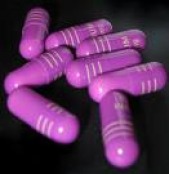Danger in using DIET PILLS

Most of the journalists used the name, "the African Hoodia Cactus" when they learned about the hunger-suppressing plant from South Africa. What they meant was "Hoodia Gordonii," found wild in the Kalahari Desert. It does not belong to the cactus genus.
Hoodia Gordonii is a succulent. The Genus is Trichocaulon and the family name is Asclepiadaceae. It is a grayish brown plant with ten or more tentacles, resembling a long cucumber with spikes. The height of the plant can be 18 inches to 6 feet. It is bitter-tasting, with an unpleasant smell.
The San Bushmen have been using this plant for thousands of years as a hunger suppressant while on long hunts. CSIR of South Africa took a patent on the plant as a weight-loss aid and sold it to a British pharmaceutical company, Phytopharm. The plant grows only in a desert climate and takes about 5 to 7 years to mature. Attempts to grow them in China, Mexico and the USA failed.
Phytopharm successfully conducted clinical trials on the plant and combined with Pfizer of the USA to produce P 57, the active ingredient of Hoodia, synthetically. After the attempt failed, because it was uneconomical, they arranged for large plantations in South Africa to cultivate the plant. They have tied up with Unilever, a British MNC and food giant, to test and market the product by 2008.
After a legal challenge and subsequent settlement between the San tribe lawyer and CSIR of South Africa, the Bushmen are to be given part of the profits made from the sales of the product. In an October 2004 convention at Bangkok, CITES (Convention on International Trade in Endangered Species of wild Fauna and Flora) included Hoodia Gordonii in Appendix II. This means that the South African government has an active control over this plant, and is not likely to allow over-exploitation of wild Hoodia.
It is proving to be a difficult task. Taking a plant from the wild desert and growing it as a plantation crop is a challenge that the scientists involved are facing. Diseases, pests and a lot of agricultural practices have to be understood. However, they are confident of success in putting the product on the supermarket shelf by 2008.
